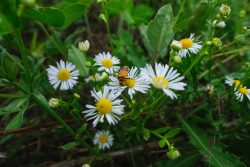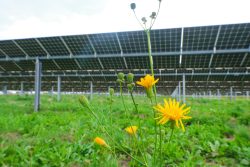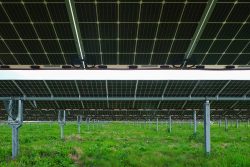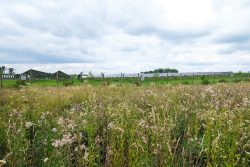
 Renewable energy resources are playing increasingly large roles in environmental sustainability, such as sunlight and wind, opening the doors to innovative methods for harnessing clean energy in the process. One remarkable approach blends solar farms with pollinator habitats, creating harmony between technology and nature.
Renewable energy resources are playing increasingly large roles in environmental sustainability, such as sunlight and wind, opening the doors to innovative methods for harnessing clean energy in the process. One remarkable approach blends solar farms with pollinator habitats, creating harmony between technology and nature.
ComEd has teamed with Nexamp, one of the nation’s leading developers of community solar, to expand access to community solar and help support this symphony of solar farms and pollinator homes. Keith Hevenor, communication manager at Nexamp, says, “We’re working with communities and businesses to help build the future of clean energy.”
Nexamp was founded in 2007 by two U.S. Army veterans who started a small business focused on rooftop solar installations after experiencing solar transformative power in U.S. military installations while serving in the Middle East. The veterans then saw the potential of community solar to shape a sustainable future at home.
Community solar helps families and businesses participate in the benefits of clean solar energy without installing solar panels of their own. Participants subscribe to a solar energy “farm” of solar panels owned by an independent developer and can earn credits on their monthly ComEd bills for their portion of the energy produced by the project.
As the sun’s rays help power lands that have nutrients, traditional solar farms are being transformed into thriving ecosystems that not only power nearby homes and businesses, but embrace native flora and fauna.
Plant Preserves for Pollinators

These preserves attract precious pollinators – bees, butterflies, and beneficial insects – whose work supports agricultural productivity and are essential in the development of 80% of the world’s plant crops.
“The population of honeybees and monarch butterflies and other pollinators in the U.S. is declining,” said Keith. “A lot of that is because what they need to thrive is on the decrease as more land is being cleared and more buildings are being built, reducing precious natural habitat.”
Creating an environment supportive of pollinators involves planting specific seed mixes. Keith explains that community solar farms require minimal intervention, with only periodic maintenance, which means little disruption to the land underneath. The shaded areas under solar panels offer fertile ground for plant growth, fostering balance in the ecosystem and positively influencing local climates.

Fertile Ground for Farmers
Solar farms also have other food production benefits in addition to protecting pollinator populations. They can be a boon to farmers by creating good growing conditions for shade-loving crops — such as blueberries, potatoes, and mushrooms, which flourish in this new ecosystem — and providing an additional source of income for their farms.
The solar journey of Mike Kenyon, a local farm owner in Burlington, Illinois, emphasizes the powerful combination of environmental and community benefit. Mike leased 15 acres of his farm to Nexamp in 2019, and the partnership has yielded benefits for his business and his community. “I have found a true win-win with Nexamp and ComEd,” says Mike.
His decision doesn’t just contribute $2,000 in real estate taxes to the local school system; it has generated income that helps local businesses. As the business between Mike and Nexamp evolves, it contributes higher additional revenue through maintenance and other services that circulate back into the community, along with electricity savings for area residents. Mike stands firm in his decision— he believes that solar is the way to go.

For farmers like Mike, embracing renewable energy signifies more than just diversifying income streams — it’s about securing a sustainable future for their land and the planet.
By dedicating space to pollinator habitats, these farmers nurture biodiversity, fostering a robust ecosystem that thrives in harmony with nature. Mike takes pride in his role in mitigating climate change while elevating farming practices to be more environmentally responsible.
ComEd and Nexamp stands as a testament to the potential of merging solar energy production with pollinator habitats. This combination allows us to move towards a cleaner, greener future and emphasizes the worth of renewable energy initiatives in supporting environmental conservation.
As we progress, supporting legislation like Illinois’ Climate and Equitable Jobs Act and sharing stories of farmers who’ve embraced this innovative interaction becomes important. Their stories help guide us in nurturing both our planet’s well-being and the vitality of local communities.
